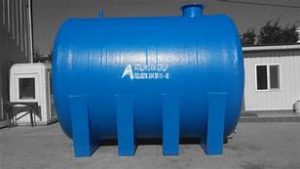
Septic systems are not a “one size fits all” type of system. Though one size tank might work for one household, that doesn’t mean it will work for every household. Talking with a plumbing and septic tank expert is going to be your best way to make sure you’re getting the right size tank. This article will give you the basic information you need to start on your home improvement and plumbing journey.
Things to consider
When it comes to choosing the size of septic tank your home needs there are a few things to consider, such as:
- What is the square footage of the house in question?
- How many rooms are in the house?
- How many people are going to be living in the home?
The most common sizing for septic tanks is between 750 gallons to 1,250-gallon tanks. Before we get into this topic, first we need some background information.
What is a Septic Tank?

Septic tanks are self-contained, underground chambers or units that are designed to hold residential wastewater. Septic systems are made up of two main components: the tank and the drain field. Once the wastewater leaves your house, it will flow into the tank. The solid waste will settle on the bottom of the tank, which creates a “sludge” layer. Other liquids like oil and grease soap  residue will float to the top, creating the “scum” layer. The wastewater, also referred to as effluent will make up the middle layer. As the tank fills up, the effluent leaves the tank and enters the drain field where it is then absorbed into the ground.
residue will float to the top, creating the “scum” layer. The wastewater, also referred to as effluent will make up the middle layer. As the tank fills up, the effluent leaves the tank and enters the drain field where it is then absorbed into the ground.
Are there Different Types of Septic Tanks?
That is a great question! Yes, manufacturers use different types of materials to make your septic tank. It just depends on personal preferences, budget and maneuverability when installing the tank. Let’s look at the different types of tanks that are most commonly used:
Concrete Septic Tanks
These tanks are designed to last for several decades, making them one of the most durable options for your residential plumbing needs. However, since they are the heaviest material, their maintenance and install will likely be more expensive. Another thing to note is that they are susceptible to cracks, which can lead to wastewater leaking into the surrounding ground, possibly contaminating drinking water.
 Plastic Septic Tanks
Plastic Septic Tanks
These tanks are more resistant to natural, biological and chemical processes that will take place in your tank. They are also more resistant to cracks. Being plastic, they are lightweight, which makes them rather easy to install. Unfortunately, plastic tanks tend to move around underground if your ground shifts or is flooded. This could mean that your tank could shift or even rise out of the ground.
 Fiberglass Septic Tanks
Fiberglass Septic Tanks
This type of tank is more durable than plastic because they are not likely to bend or shift in the ground. They are lightweight and noncorrosive, inside and out and they are also more economical than concrete septic tanks. They are also not likely to experience structural damage like the plastic or concrete tanks.

Steel Septic Tanks
These tanks are becoming a thing of the past, but that doesn’t necessarily mean you won’t come across one. Steel is the least expensive material used for septic tanks, but this also comes at a cost. Designed to last between 20-25 years, they tend to rust before they can reach their full life expectancy.
Now that we have the background information, lets get to the real topic in question.
What Size Septic Tank Do You Need?
- 1-2 bedroom home with less than 1.500 sq. ft. = 750-gallon tank
- 3 bedroom home with less than 2,500 sq. ft. = 1,000-gallon tank
- 4 bedroom home with less than 3,500 sq. ft. = 1,250-gallon tank
- 5 bedroom home with less than 4,500 sq. ft. = 1,250-gallon tank
- 6 bedroom home with less than 5,500 sq. ft. = 1,315-gallon tank
Conclusion
Keep in mind that the above information is a rough estimate. The exact size of tank you require will depend not only on the above-mentioned variables, but also your local jurisdiction requirements. Your best bet in making sure that you are not only adhering to the local codes, but also getting the “most bang for your buck” is to talk to a professional plumber and septic system installer. If you get the wrong size or have too many people living in a home with a smaller septic tank, it might lead to backups or the need for more frequent pumping and maintenance.

If you’re ready to join the septic tank family, contact us today! We are more than happy to help you on your new residential plumbing adventure.
